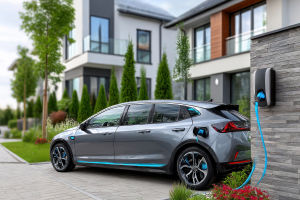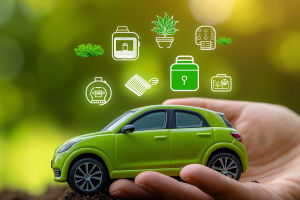Cars vs. Green Cities
Have you ever thought about how the way cities are planned affects the environment, especially through car usage?
Urban planning and transportation are deeply connected, and cars play a huge role in shaping not only how we live but also the health of our environment.
This article explores how car use influences environmental quality in urban areas and what urban planners can do to create greener, healthier cities.
The Relationship Between Urban Planning and Car Usage
Urban planning defines how cities develop roads, residential areas, commercial zones, and public spaces. When cities are designed with a heavy focus on car accessibility, sprawling suburbs and long commutes often result. This leads to increased reliance on cars for daily transportation, raising fuel consumption and pollution levels.
Environmental Impacts of Heavy Car Use in Cities
Cars are a major source of air pollution in urban areas, emitting greenhouse gases like carbon dioxide and harmful pollutants such as nitrogen oxides and particulate matter. These emissions contribute to climate change and pose significant health risks, including respiratory issues for city residents. Noise pollution from dense traffic also disrupts urban life.
How Urban Sprawl Increases Environmental Pressure
Sprawling cities with low population density require longer trips by car. This means more fuel is burned per trip, and more roads and parking lots replace green spaces, reducing natural carbon sinks. Urban sprawl also increases energy consumption for heating and cooling homes spread across large areas, indirectly boosting environmental damage.
The Role of Public Transport and Walkability
Urban planners can reduce car dependency by designing cities that prioritize public transportation, walking, and cycling. Well-connected transit networks and pedestrian-friendly streets make it easier for residents to choose alternatives to driving. This lowers vehicle emissions and helps create healthier, more active communities.
Case Studies: Cities Leading with Sustainable Planning
Cities like Copenhagen and Curitiba have successfully integrated public transit and bike infrastructure, drastically reducing car use and emissions. Their urban designs focus on mixed-use neighborhoods where people live close to work and amenities, cutting the need for long car trips.
Green Infrastructure and Its Benefits
Incorporating green spaces such as parks, urban forests, and green roofs in city planning helps absorb carbon dioxide and reduce urban heat islands created by asphalt and concrete. These features also improve air quality and provide recreational spaces that promote mental and physical well-being.
Challenges in Shifting Away from Car-Centric Cities
Transitioning from car-dependent urban layouts requires substantial investment, and cultural change. Many cities face resistance due to existing infrastructure and habits. Additionally, affordable housing and job locations must be aligned with transit options to make alternatives to cars practical for all residents.
Technological Innovations Supporting Greener Cities
Emerging technologies such as electric buses, smart traffic management, and shared mobility apps make it easier for urban planners to design efficient and eco-friendly transportation systems. These tools help reduce congestion and emissions while improving convenience for city dwellers.
Looking Ahead: What Can You Do?
As residents, you play a role too. Choosing public transit, biking, or carpooling can lessen your environmental footprint. Supporting city policies that promote sustainable transportation and urban green spaces encourages long-term positive changes.
How do you think your city's planning affects your daily commute and the environment? Could changes in urban design improve your quality of life and the planet's health? Share your thoughts — your insight matters in shaping greener cities!
Contact to : xyjph123@gmail.com
Privacy Agreement
Copyright © boyuanhulian 2020 - 2022. All Right Reserved.
Privacy Agreement
Copyright © boyuanhulian 2020 - 2022. All Right Reserved.


